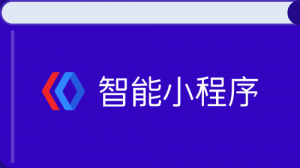阅读(992)
赞(10)
百度智能小程序 创建IntersectionObserver
2020-08-13 15:47:28 更新
swan.createIntersectionObserver
解释: 创建并返回一个 IntersectionObserver 对象实例。在自定义组件中,可以使用 this.createIntersectionObserver([options]) 来代替。
方法参数
Object object
options 参数说明
| 属性名 | 类型 | 必填 | 默认值 | 说明 | ||
|---|---|---|---|---|---|---|
|
thresholds |
Array |
否 |
[0] |
一个数值数组,包含所有阈值。 |
||
|
initialRatio |
number |
否 |
0 |
初始的相交比例,如果调用时检测到的相交比例与这个值不相等且达到阈值,则会触发一次监听器的回调函数。 |
||
|
selectAll |
Boolean |
否 |
false |
是否同时观测多个目标节点(而非一个),如果设为 true ,observe 的 targetSelector 将选中多个节点(注意:同时选中过多节点将影响渲染性能) |
||
示例

代码示例 1:
<view class="wrap">
<view class="message">
<text s-if="appear">小球出现</text>
<text s-else>小球消失</text>
</view>
<scroll-view class="scroll-view" scroll-y>
<view class="scroll-area" style="{{appear ? 'background: #ccc' : ''}}">
<text class="notice">向下滚动让小球出现</text>
<view class="filling"></view>
<view class="ball"></view>
</view>
</scroll-view>
</view>Page({
data: {
appear: false
},
onLoad() {
this.intersectionObserver = swan.createIntersectionObserver(this);
// 监测 scroll-view 可视区域和小球元素节点的相交情况
console.log('swan.createIntersectionObserve的可选值', this.intersectionObserver._options);
this.intersectionObserver
.relativeTo('.scroll-view')
.observe('.ball', res => {
console.log('observe', res);
// boundingClientRect: 目标边界,这里指小球的位置情况,这个位置是相对于整个页面的,不是相对于参照元素的 scroll-view 的
// dataset: 观察对象携带的数据。
// id: 观察对象的 id,它与上面的 dataset 多使用于一次观察多个对象的场景,用于区分不同的对象。
// intersectionRatio: 相交比例,为 0 时说明两者不相交。
// intersectionRect: 相交区域,height 为 0 时说明此时没有相交。
// relativeRect: 参照区域的边界,作为参考物,它的值一般是不会变的。可以对比它于开始相交时一直没变,因为它就是一个 scroll-view 的组件在页面上呈现出的位置信息。
// time: 监测到两者相交时的时间戳
this.setData('appear', res.intersectionRatio > 0);
});
},
onUnload() {
this.intersectionObserver && this.intersectionObserver.disconnect();
}
});.wrap {
padding-top: 30rpx;
}
.message {
display: flex;
width: 100%;
margin: 50rpx 0;
justify-content: center;
font-family: -apple-system-font, Helvetica Neue,Helvetica,sans-serif;
font-size: 40rpx;
}
.scroll-view {
height: 400rpx;
background: #fff;
}
.scroll-area {
display: flex;
flex-direction: column;
height: 1300rpx;
transition: .5s;
align-items: center;
}
.notice {
margin-top: 150rpx;
}
.filling {
height: 400rpx;
}
.ball {
width: 200rpx;
height: 200rpx;
border-radius: 50%;
background: #38f;
}代码示例 2: options 为 thresholds 时
Page({
data: {
appear: false
},
onReady() {
this.intersectionObserver = swan.createIntersectionObserver(this, {
// 阈值数量设置少,避免触发过于频繁导致性能问题
// 通常会设置为 1,表示元素要完全展示在页面上才会进行记录
thresholds: [0, 0.5, 1]
});
// 监测 scroll-view 可视区域和小球元素节点的相交情况
// 配置 thresholds:[1],那么当监听对象和参照物相交比例达到 1 时,会触发监听器的回调函数
console.log('监听实例', this.intersectionObserver);
this.intersectionObserver
.relativeTo('.scroll-view')
.observe('.ball', res => {
console.log('observe', res);
// intersectionRatio: 相交比例,为 0 时说明两者不相交。
this.setData('appear', res.intersectionRatio > 0);
});
},
onUnload() {
this.intersectionObserver && this.intersectionObserver.disconnect();
}
});代码示例 3: options 为 initialRatio 时
Page({
data: {
appear: false
},
onReady() {
this.intersectionObserver = swan.createIntersectionObserver(this, {
// 初始相交比例,默认 0,达到 initialRatio 或 thresholds 中的阈值时,回调被触发
initialRatio: 1
});
// 监测scroll-view可视区域 和 小球元素节点的相交情况
// 配置了 thresholds:[1],那么当监听对象和参照物相交比例达到 1 时,会触发监听器的回调函数
this.intersectionObserver
.relativeTo('.scroll-view')
.observe('.ball', res => {
console.log('observe', res);
// intersectionRatio: 相交比例,这里为 0 时说明两者不相交。
this.setData('appear', res.intersectionRatio > 0);
});
},
onUnload() {
this.intersectionObserver && this.intersectionObserver.disconnect();
}
});代码示例 4: options 为 selectAll 时
Page({
data: {
appear: false
},
onReady() {
this.intersectionObserver = swan.createIntersectionObserver(this, {
selectAll: true
});
this.intersectionObserver
.relativeTo('.scroll-view')
.observe('.ball, .ball2', res => {
console.log('observe', res)
this.setData('appear', res.intersectionRatio > 0);
});
},
onUnload() {
this.intersectionObserver && this.intersectionObserver.disconnect();
}
});
